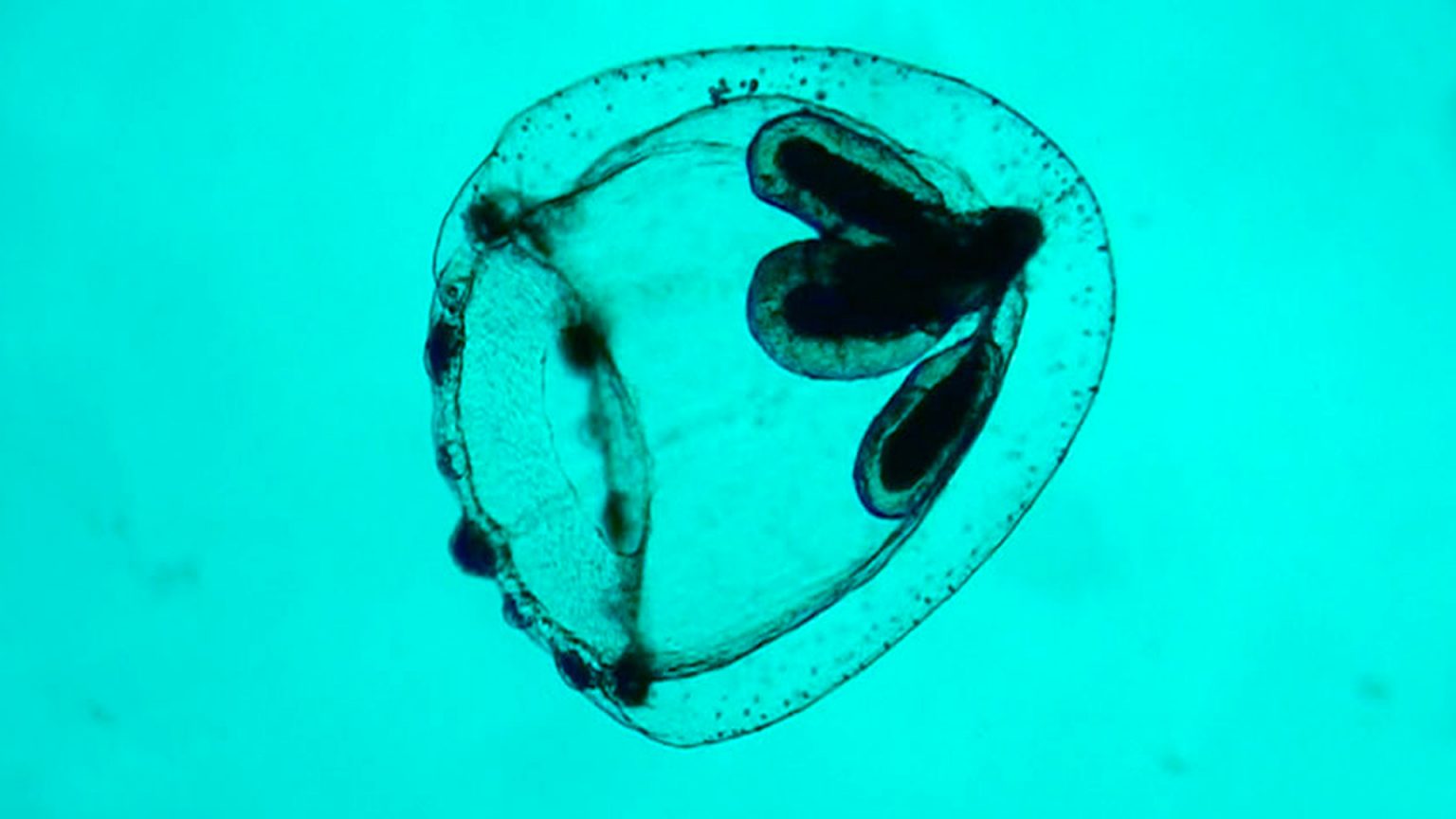In Colossal, the new movie by writer-director Nacho Vigalondo—whose first features in his native Spain, Timecrimes and Extraterrestrial, were particularly clever spins on sci-fi fantasy concepts—Anne Hathaway plays the titular character. Well, not exactly. But her Gloria is a colossal pain in the arse (imagine a less wrist-slittingly grating variant on her self-destructive protagonist in Rachel Getting Married), such that at the film’s beginning her own boyfriend (Dan Stevens) evicts her from his Manhattan apartment for being a terminal leech and layabout.
With nowhere else to go, she slinks back to her hometown, where at least her deceased parents’ home is still empty and available. Running into old grade-school pal Oscar (Jason Sudeikis) gets her a waitressing job as well as some new people to get drunk with, as is her wont. But eventually, it emerges that her nightly benders have an odd, paralleling relationship to things happening on the other side of the globe—where a Godzilla-style towering monster has abruptly re-appeared after several decades’ absence to wreak havoc in Seoul.
In the interest of avoiding spoilers (though the trailers may have already spoiled the basic “surprise” for you), let’s just say the disorder that Gloria’s hapless life creates on a very small scale at home turns out to have very large-scale repercussions elsewhere. As children sometimes act out their aggressions with toy monsters, grown-up Gloria’s all-too-real equivalents go around smashing things when she throws a tantrum.
An antic mashup of slacker comedy and old-school cinematic monster rally, Colossal pays slavish homage to films of the classic Japanese kaiju eiga genre, which kicked off in 1954 with the original Godzilla, a.k.a. Gojira. Released two years later to English-speaking markets in an “Americanized” version (dubbed, cut, and with some added scenes starring TV’s “Perry Mason,” Raymond Burr), it was a global sensation—spurring innumerable sequels, spinoffs, remakes, and imitations. The latest Japanese and U.S. Godzilla features (both hits) were released just one and three years ago, respectively.
While Colossal definitely rests on the more satirical and absurdist end of the genre’s scale, it may well stir your appetite for some trad, comparatively poker-faced Giant Monster Cinema. Here are a few good ways to scratch that itch.
Where Time Began
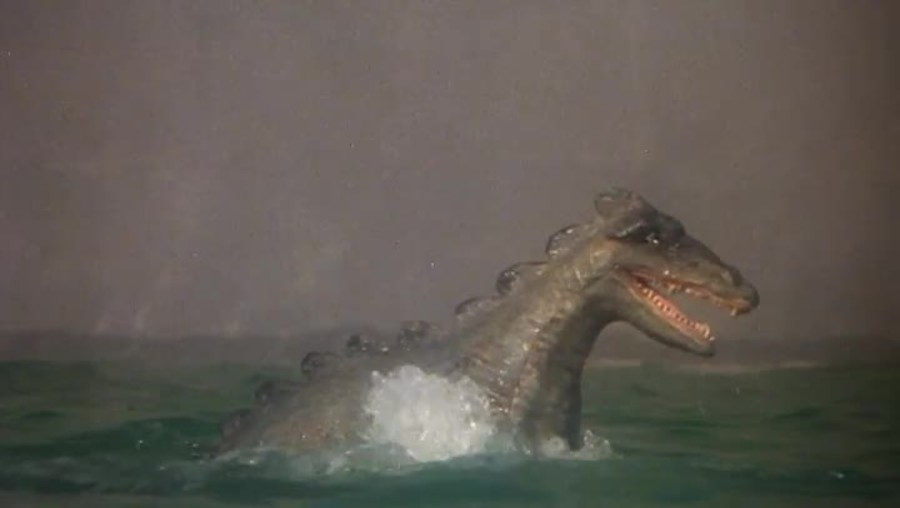
One of the first significant movies to trade in giant “monsters” was the 1925 blockbuster The Lost World, based on Sherlock Holmes creator Arthur Conan Doyle’s fantasy novel about an expedition to a hidden Southern American region. There, dinosaurs, pterodactyls, and other prehistoric creatures still survive, thanks to stop-motion animation effects by the same folks who later designed King Kong. Copycat screen enterprises were surprisingly few, however, until adaptations of other imaginative flights by Doyle, Jules Verne, Edgar Rice Burroughs, and others began thrilling audiences from the mid-1950s (with giant-squid-imperiled 20,000 Leagues Under the Sea) onward.
They enjoyed a particular vogue in the 1970s when Spanish director Juan Piquer Simón made this Verne-derived imaginative flight in which Victorian explorers discover numerous wonders as they travel deep into the planet’s core—including, natch, some very-much-alive, hungry, and aggressive dinosaurs. Old-school to the core, Simon eschewed more sophisticated recent developments to utilize FX in the stop-motion and/or rubber-suit mode of earlier filmic epochs—which prompted some to dismiss When Time Began as “cheap ’n’ cheesy” at the time, but adds to its charm now. The cloak of antique whimsy such films wore was shed when Spielberg and Michael Crichton launched a new, CGI-dominated era of prehistoric-terror cinema in Jurassic Park and its sequels.
Creature from the Black Lagoon
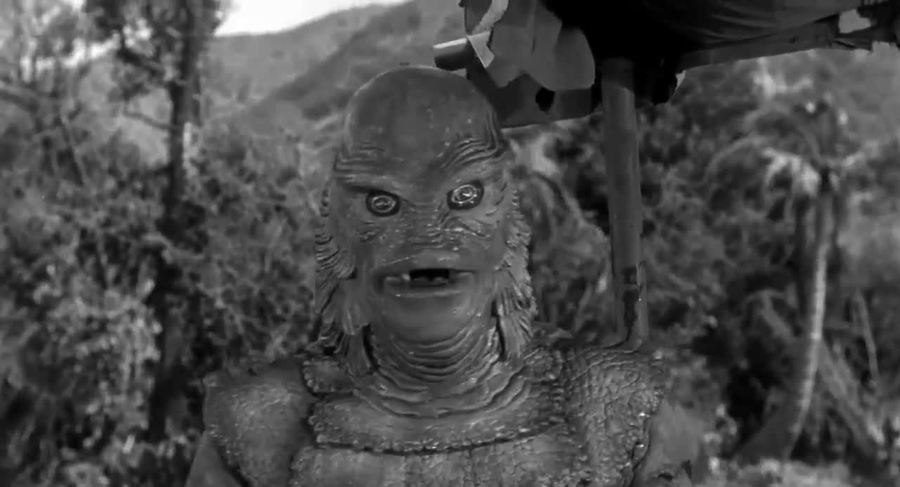
The same year Godzilla was released in Japan, Hollywood birthed perhaps the most famous of its own monsters likewise bred by radiation—and by fear of technology wreaking havoc with nature in the “atomic age.” But the scaly ghoul’s American ingenuity came up with were usually “giant” like a basketball player, not like a skyscraper. Just big enough, in fact, to sweep a girl off her feet in the hopes of making sweet, slimy love.
That is nearly the fate of Julie Adams here, as she stirs the heartstrings of an ancient, half-reptile “Gill Man” disturbed from his rest deep in the Amazonian jungle. This slimed-up beauty-and-the-beast dynamic would be one that myriad drive-in opuses of the era would emulate. For one of the campiest such variations, check out 1965’s trash classic The Beach Girls and the Monster, a.k.a. Monster from the Surf, whose mix of bikini-clad cheesecake, garage rock, and gore was summed up by the poster slogan “Go! Go! Go! The Coolest Monster Shindig of Chicks and Chills!”
Gorgo
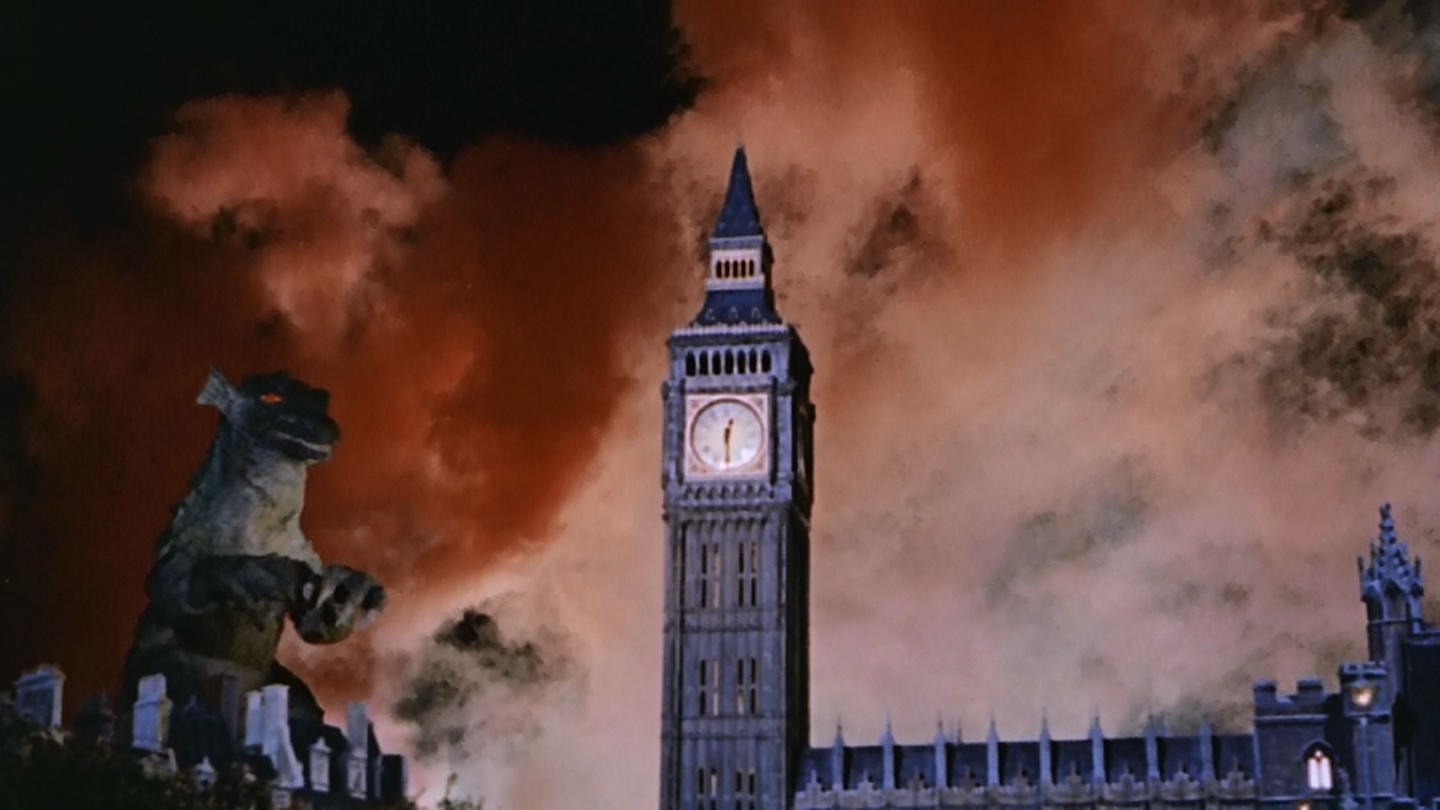
Japan (and in particular Godzilla’s stomping grounds, Toho Film Studio) continued to dominate the giant-monster sweepstakes over the decades. But other countries did take a stab at the genre occasionally. In 1961, the same year that Denmark produced Reptilicus (about a dragon-like flying creature), Britain waded in with this shameless, entertaining mashup of elements “borrowed” from Godzilla and King Kong, in which a jumbo “sea monster” is dragged from its lair off the Irish coast to be put on display in Piccadilly Circus.
Trouble is, it turns out mighty Gorgo is just a baby. When his truly ginormous mummy comes raging to the rescue, she just might wreck all London before she’s done. Its juvenile tone (the hero is a young boy) reflecting the fact that Godzilla-type movies were already considered “kiddie matinee” fodder, Gorgo nonetheless delivers the goods in some surprisingly nasty climactic scenes of mass panic and destruction.
Destroy All Monsters

Though much-imitated, Godzilla originator Toho Film Studio’s kaiju eiga films remained the gold standard, reaching a peak of both productivity and popularity in the 1960s. As early as 1962 the genre was already cannibalizing itself with the inevitable East/West face-off King Kong vs. Godzilla. Soon multiple-monster matches were the new norm, an all-time fan favorite being this 1968 sci-fi spectacular directed by Ishiro Honda, who’d helmed the big green guy’s very first outing fourteen years earlier. Here, Mothra, Godzilla, Rodan, and other established Toho titans are peacefully domiciled on an island off the Japanese coast—until suddenly they all go on a rampage, destroying the world’s major cities. And that’s just in the first fifteen minutes.
We soon realize they’re being controlled by the Kilaaks, outer-space invaders who wear silver sequined ponchos and skullcaps. As if that weren’t already offensive enough, they plan to subjugate humanity and claim Earth as their own. You know what’s gotta happen: Our monsters (after deprogramming) must fight their monsters. (Or monster: It’s unclear whether three-headed King Ghidorah is a singular or plural being.)
Long Weekend
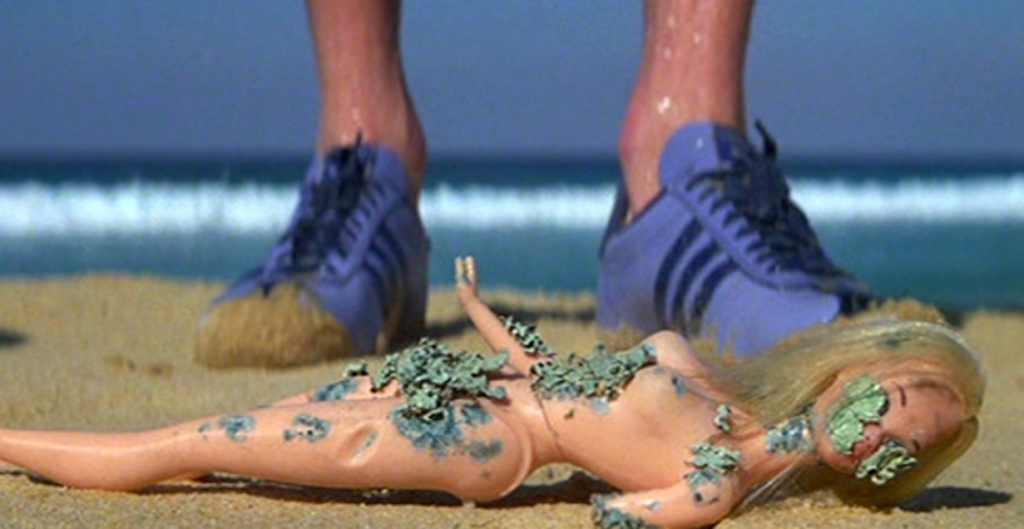
Though most grownups by then found such giant-monster movies laughable, conversely in the 1970s they were also taking seriously the lesson of the original Godzilla: that mankind messes with Mother Nature’s intricate plan at his peril. Ergo a new strain of “monster movies” arose in which the creatures were no longer giant—but they sure were angry. In this eco-conscious era, it was assumed that pollution and other ails might easily one day drive our variably furry, feathered, finned, etc. friends to homicidal mania against our own thin-skinned species.
The most famous such opus was, of course, Jaws. But further, down the exploitation evolutionary scale, there were also notable films built around an attack by rats (Willard), dogs (The Pack), snakes (Ssssssss), ants (Phase IV), worms (Squirm), and more, including the self-explanatory likes of Frogs, Alligator, Piranha, King of the Spiders and Day of the Animals. The subtlest, arguably the best, and certainly the most ambiguous of all these was Colin Eggleston’s 1978 Long Weekend, which featured the memorable ad line “Their crime was against nature. Nature found them guilty.”
Its protagonists are a horrible yuppie couple (John Hargreaves, Briony Behets) whose callous attitude toward the wild flora and fauna around them during a “luxury camping” weekend triggers mysterious—but persistent, and eventually brutal—reprisal. Not a commercial success at the time, it has since become a cult favorite whose reputation was not eclipsed by a poorly-received 2008 remake starring The Passion of the Christ’s Jim Caviezel.

